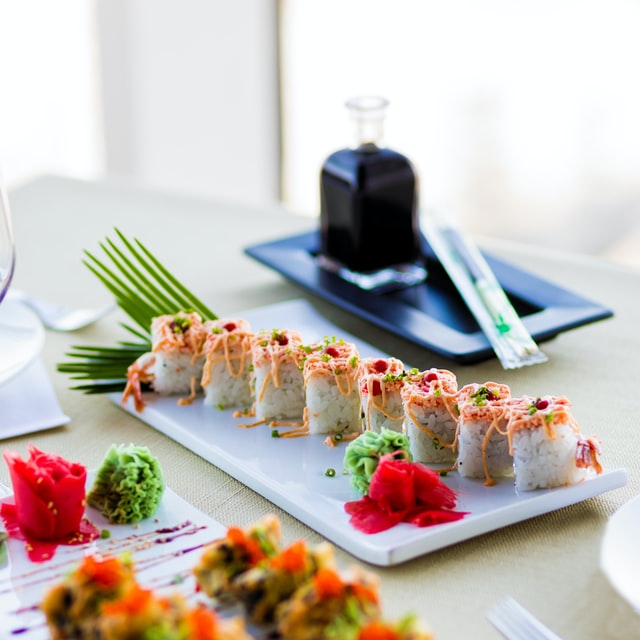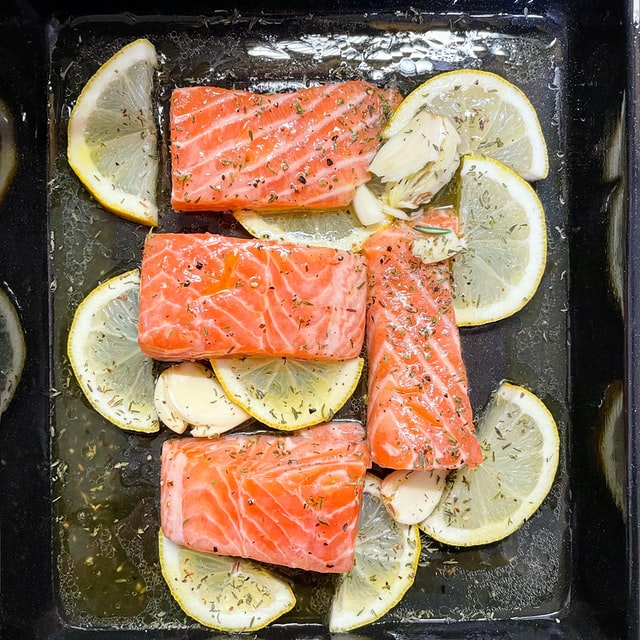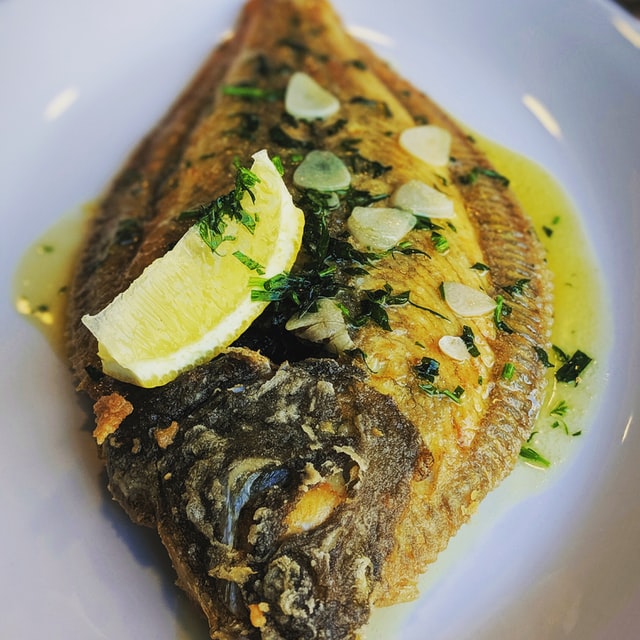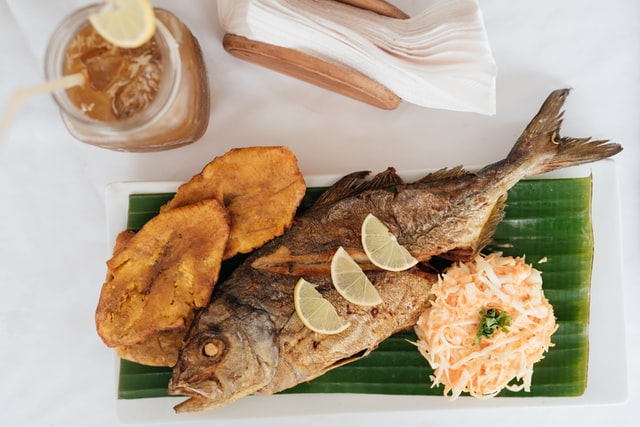ikejime fish aging – learn here how to mature your fish, for a sublime result
Fish, as you know, is much more delicate than other animal products. Its qualities have a tendency to deteriorate much more quickly. This has a huge impact on the economy of commercial fishing. A fish which has been correctly prepared is valued at the same level as a live fish, especially in countries where the culinary culture is based primarily on the consumption of fish, as in Japan. This is why numerous scientific studies have been held on the best way to maintain fish in the highest state of freshness for as long as possible. All of the studies show that “ikijime” can multiply the duration of the fish consumption period by three or four times. “Ikijime” also betters the maturation of the fish, which allows the optimization of its taste, its texture, and the development of the famous “umami,” fifth taste discovered by the Japanese. Obviously, these discoveries have profoundly impacted the Japanese culinary art. You don’t have to be a great sushi master to taste the difference, the flavor of “ikijime” fish speaks for itself.
If you want to follow an exceptional fishmonger expert in the refining, the maturation of fish by Ikejime, also if you wish to contact professional teachers, trained in Japan, to organize or participate in training courses, we invite you to contact this society :
Les vents du large :
For ikejime fish aging, curing of ikejime fish, mastering the processes of cooling and storing the fish also has a crucial impact on the length of the optimal tasting period.
It is time here to establish a distinction between “freshness” and what we will call together “peak tasting”, i.e. the optimal period for tasting the fish. The uninitiated will tend to confuse the concept of “freshness” and “tasting peak”, but it is important here to clearly understand the difference. People will always be looking for fresh fish, but without understanding what is chemically going on inside. Indeed, if some fish treated correctly can be better after three days, on the other hand a 200 kg tuna will require about two weeks of maturation to reach its best tasting level, and could seem bland and rubbery if eaten the same day. . Can we still talk about fresh fish? yes if by “fresh” you mean good to eat, no if by fresh you mean “freshly deceased”.
This precision established, let us return in the process of cooling and the concept of “rigidity by the cold”
All studies show that if you expose your fish to a temperature of 0° Celsius you risk causing cold rigidity. To understand, imagine the feeling you have when skiing in the high mountains without gloves. Before frostbite occurs your fingers become stiff… Rigidity by the cold causes an accelerated degradation of the fish in the same way as rigor mortis. The effects are quite comparable. Cold rigidity, as well as rigor mortis accelerate the process of ATP degradation, which greatly shortens the optimal tasting period. For this reason it is preferable to keep your fish at a temperature between 5° and 10° Celsius until the phase of rigor mortis is complete. Ikejime slows down the rigor mortis phase, without ikejime, the “rigor mortis” phase can be complete in 6 to 8 hours, but with ikejime and moderate and controlled cooling, the “rigor mortis” phase may take between 24 and 72 hours after death. When the rigor mortis phase is completed, this means that chemically the ATP has been broken down into IMP, and all the amino acids forming the umami will be able to increase and enhance the taste of the fish. The fish has its best level when the rigor mortis phase is completed, at this stage it has both a fresh texture, a beautiful translucent appearance, an improvement in umami, and an increase in the level of amino acids.
It will enter different tasting periods that we will call “peak tasting” during which its aroma will vary, as its flesh softens, the umami will develop, a little like a cured ham.
Fish, as well as meat or wine, will obtain a much better added value with appropriate maturation. We have seen previously that by practicing ikijime, by respecting the good practices in the cold chain, by cleaning the fish in the rules of the art, you can enjoy your fish for days without freezing it. The ideal consumption period varies according to individual tastes and species. To make up your own mind, you will have to do some tests. In terms of sashimi, as with cooking meat, tastes vary from one individual to another, and according to the quality of care taken throughout the process. To develop this famous fifth taste that the Japanese call “umami” you will have to learn how to mature your fish.
The umami flavor will develop differently depending on how fast the ripening process is depending on the type of fish. The great sushi chefs are committed to offering their products at the optimum moment of their maturation. This maturation will vary according to the taste of the individuals, the season, the type of fish, etc. It is difficult to propose a single rule because it is also a matter of taste. We think it’s best for everyone to have their own experience.

The flesh is absolutely fresh, transparent and beautiful, on the other hand the texture is still hard and rubbery, the fibers and the protein structure has not yet been modified, the umami has not yet developed, the flesh is bland. Many people continue to think that fish is better just after it is dead, but that is not entirely true, just as an immature fruit does not bring as much pleasure as a ripe fruit. A concrete example: with mackerel, if you practice ikijime on a mackerel, and you cook it in the oven the same evening, you will be disappointed by its taste and its texture, unlike a mackerel that has not been ikijime will be better if consumed the same evening of its capture. Always keep in mind that with ikijime the maturation, and the appearance of umami flavors will be slower. Save your ikijime mackerels and consume within 24 hours… enjoy the difference.
ATP is broken down into IMP, inosinic acid, one of the components of umami. At this stage the ATP has left its place and the IMP is at its maximum, the body of the fish becomes rigid, but the flesh is not hard. It is strong and flexible while being soft to chew. It is one of the optimum for consumption the taste is not yet extremely developed, with a rather fresh texture it is the ideal time for amberjack or halibut.

Just after the rigor mortis phase, the flesh begins to detach, we observe a decrease in the IMP, this evolution remains slow if ikijime has been well done. Proteins are broken down into amino acids and peptides, components of umami. IMP and glutamic acid combine into a remarkable umami. It is unquestionably the optimum of flavor. The taste is rich, texture much softer and tender. Fish that would still be too rubbery in phase 2 will be perfect at this stage. Now is the time to taste your cooked or raw mackerel, and enjoy their unsaturated fats that will delight your taste buds as well as your health. For mackerel, do not go beyond this stage, the quality would then deteriorate.
The texture has now become much softer, the aging continues. The umami increases even more, the flavor thickens a little bit, it seems a little sweeter. You may have to remove a superficial layer if you want to keep it looking its best, but the fish is still delicious at this stage. A tuna weighing more than thirty kilos can last more than a week, a 300 kg tuna has been matured for up to 20 days. Rubbery meats such as cod, for example, are at their best at this stage if you like mature flavors.

Let’s see in detail how to clean the fish and prepare it for ideal maturation. After fishing, or the next day, scale, gut, eliminate the blood, and wipe your fish, it will be preferable to limit contact with the air and for this reason do not lift the nets at this stage, and do not remove the skin, the advantage of keeping the head at this stage is to limit the gas exchange surface and therefore the oxidation of the flesh and bacterial infection. In short, make as few cuts as possible to obtain a clean and dry fish without traces of blood and without gills, also eliminate the blood which remains in the head. This way you will keep the fillets clean and protected in the body of the fish.
After having scaled the fish we face ì the question of whether or not to sever the head. There are two different schools of thought on the process. Of course, it will be easier to clean the fish without its head, and it is also easier to store, but some people prefer to filet fish with the head still on it.
It’s really up to you to decide, as it isn’t a matter of life and death, but note that if you choose to leave the head, you must take care to remove the gills. If you decide to throw out the head, you should know that you are also throwing out the fish cheeks which are without a doubt one of the tastiest pieces, and the piece located beneath the head between the pectoral fins, called “cocochas” by the Spanish, is considered by them the best part of the fish. The head is also the part preferred by the West Indians. You can also make delicious soups with the head and trimmings. If you are concerned with respecting life to the max, it’s a good way to use your catch without wasting anything.After having emptied the fish of its innards and removed the gills, it is crucial to clean all traces of blood. Blood is bad and it ruins the fish. The primary vein is located between the swim bladder and the spine.
You should carefully cut it lengthwise with a knife and then clean it with a special brush, in order to evacuate all blood. This step is a vital one in the maturing process of the fish, as leaving blood will result in unpleasant odors. Therefore, do not skimp on this cleaning, it is a key point of the process. After having cleaned everything you must absolutely stop using fresh water: no more contact between the fish and fresh water from this point on. You must now dry the fish clean. The drying is very important. Dry the inside and outside and make sure to get rid of as much humidity as possible. From now on, it is forbidden to use fresh water!
Wherever you store your fish, the important thing is to wrap them in an absorbing material which will serve to absorb any excess liquid. Place this absorbing material in and around the fish. Ideally you should change the material every day.
At this stage, the worse thing to do would be to let the fish to sit in its own juice, so you must avoid this at any cost, hence the importance of changing the absorbing material. Paper towels can do the trick, but using specialized products is always better. You can start the process of maturation in the cooler if its quality level permits it, which allows you to avoid overloading your fridge. Remember to place absorbing paper around and in your fish, then wrap the whole thing in cellophane to limit gas exchange.You’ll also want to avoid direct contact between your fish and ice by placing a towel, a piece of wood or cardboard, etc., between the ice and the fish to avoid any risk of the fish hardening due to the cold. Beware if you use icepacks, as the condensation will wet everything, and this humidity can damage your fish. Again, avoid direct contact between the fish and the icepacks.The best-case scenario is a cooler with a built-in divider, to separate the ice from the fish and to avoid your fish swimming in juice…For those of you who use ventilated refrigerators, note that your fish may dry out a bit. If your fish still has its skin, this isn’t a problem, as only the skin will dry a bit.
When dealing with large fish such as tuna, the outer part of its meat will dry a bit, and great chefs don’t hesitate to scrape away a part of it before cutting it into “sashimi”. What’s important to remember: clean the fish well, eliminating 100% of blood and juices and drying it. Do not let fresh water touch the fish anymore, keep the skin on if possible (except for large fish obviously), wrap it in absorbing paper, both inside and outside the fish, changing the material every day as necessary to avoid any contact between the fish and its liquids. You can also place your fish in boxes in the fridge or wrap it in cellophane.The keeping time is from two to ten days depending on the case, run your own experiments.
We do not wish to give you further guidelines on the maturing times. This would onlyrestrain your talent. Our role is to bring you the basic theoretical knowledge and the necessary tools to get started, not to deprive you of research, discovery, progress, achievement, and the joys of succeeding that you deserve…
If you have any questions to ask us about ikejime or other fish maturation refining techniques, our hotline is waiting for you 7 days a week:

